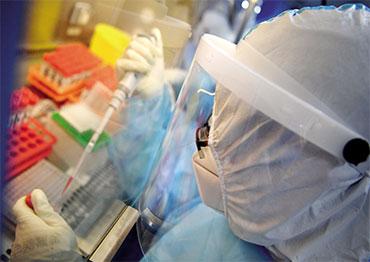Regular testing of millions of people poses tremendous challenges. Beyond setting up testing stations and allocating equipment, many public health experts told NewsChina that the greater difficulty is the speedy recruitment and training of personnel this requires.
Mass testing has spurred a new industry. According to National Health Commission data, there are some 13,000 laboratories qualified to conduct Covid-19 nucleic acid testing nationwide employing 153,000 certified technicians. Third-party testing firms are springing up to fill shortages, and governments are fast-tracking their approvals.
A new testing firm that opened on April 26 was licensed by Chaoyang District Health Commission in Beijing to conduct nucleic acid tests on May 3. In response to public concern over the hastened approval, the Commission cited the huge gap in the nucleic acid testing capacity amid the sudden Omicron outbreak.
According to reports, health inspections of 59 medical laboratories in Shanghai revealed more than 50 violations, such as unqualified testing personnel and substandard testing procedures.
At least 750,000 new testing sites will open nationwide to meet demand in urban areas, requiring at least one million testing personnel, according to a report on the Covid testing industry by newspaper Shanghai Securities on May 9.
After nearly 200 third-party testing firms were contracted to conduct regular testing in Beijing, problems soon emerged. Some were caught cutting corners and faking test results. By the end of May, Beijing police had investigated three nucleic acid testing agencies for violating regulations and criminal misconduct.
Among them, Pu Shi Medical had its operating license revoked on May 20 after health authorities in Beijing’s Fangshan District discovered the lab had released more results than conducted tests. One week later, three local officials in Fangshan including Yang Daqing, deputy director of the Fangshan District Health Committee, were placed under investigation.
According to official public statement, the other two labs – Zhong-tong Lanbo and Jinzhun Medical – allegedly mixed more swab samples than is prescribed in one tube to cut costs. Artificial dilution of samples affects the accuracy of test results, which risks further spread.
Zhang Jun, a technician at a large genetic testing institution in China, told NewsChina that official regulations require one tube per person for nucleic acid testing, and batch testing, where 10 samples from multiple individuals are mixed and tested together, reduces the costs of mass testing. However, batch testing must follow national standards.

 Old Version
Old Version
